Native Garden Educational Points
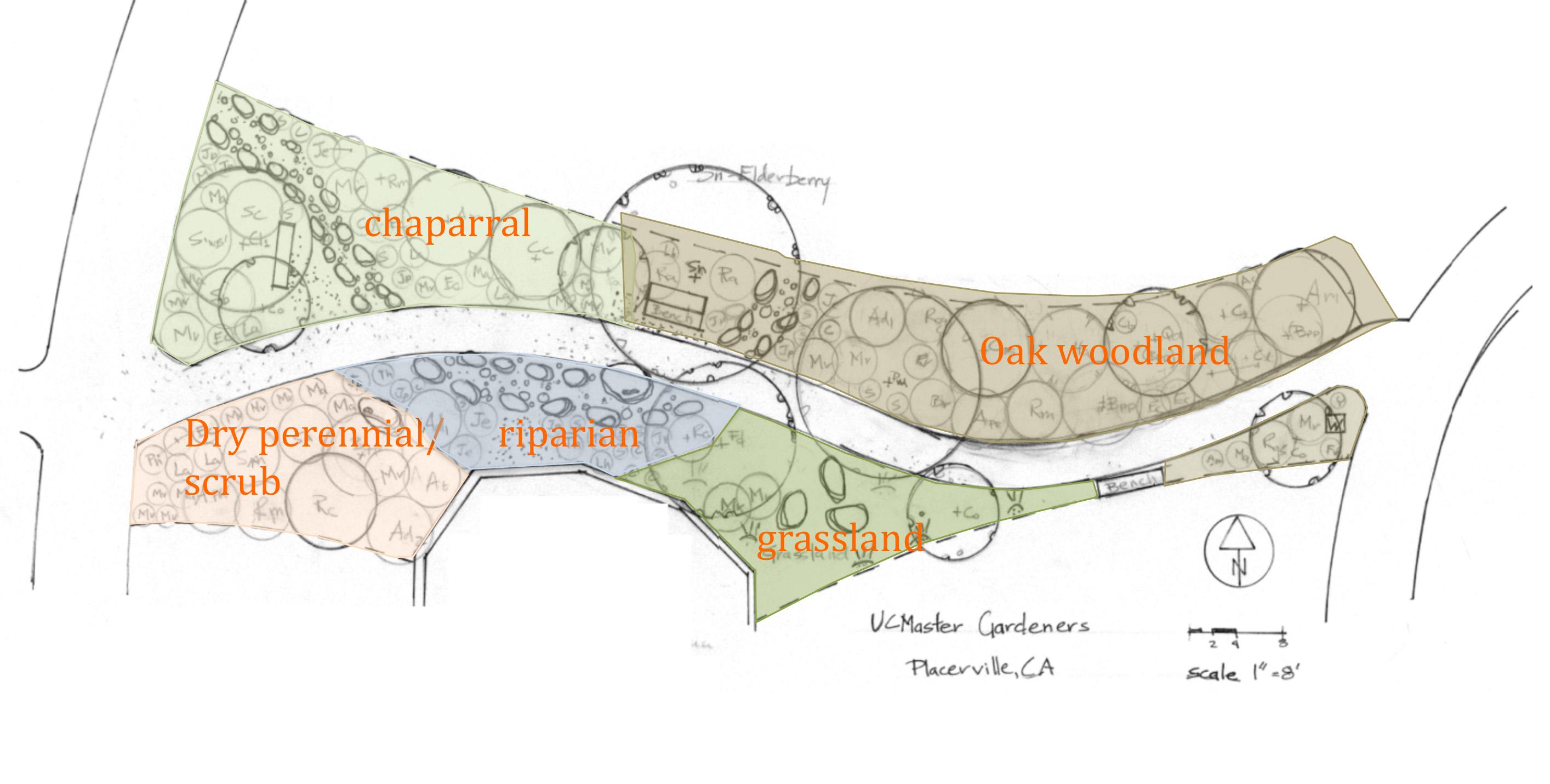
Native Garden Map
- Why natives?
- Low water use(when selected for our area, and not riparian)
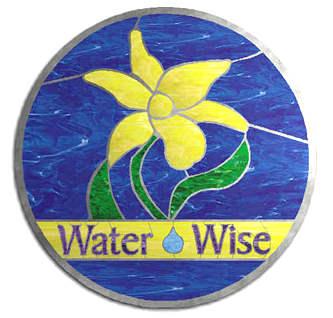
AFTER establishment. First year, must water every 7-10 days - Provides habitat that insects, birds, other wildlife are adapted to
- No need for pesticides, fertilizer
- Sense of place
- Great variety of native plants that are beautiful-
- way more than conventional nursery offerings would suggest
- all these available at specialty native nurseries - check local nurseries
- Selection Criteria for Native Garden-Vast majority of these plants are:
- Native to El Dorado County, with emphasis on this elevation
- Low or very low water use
- Garden worthy
- Sustainability features:
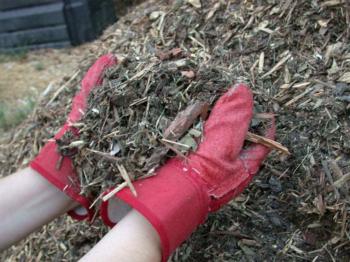 Mulch
Mulch- Low water use
- Runoff kept on-site as resource!
- Rainwatercatchment-
- Raised paths direct water to plants
- Dry stream bed with deep gravel filled holes- help rain infiltrate for storage in soil-
- Small rain garden- plants inundated in winter, dry in summer
- Overflow provided- foroccasional heavy rain events
- Rainwatercatchment-
- Locally sourced rock, mulch, bench rocks/wood- (also, free)
- Different mulches shown:
- Oak mulch/leaves, (oak woodland area)
- Chipped oak tree, (chaparral area)
- no mulch areas (bees and birds)- important too!
- chop and drop, (some of grassland area (note: chop and drop is a permaculture approach)
- Zero pesticide/fertilizer use
- Toleration of critters (not thought of as “pests”, but “guests” unless truly killing a plant- a very rare occurrence!)
- Found landscape: vinegar weed, turkey mullein, evening primrose,baccharis
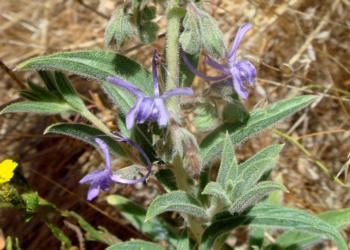 Vinegar Weed (Trichostema lanceolatum)
Vinegar Weed (Trichostema lanceolatum)- This is an up and coming movement in native plant garden world- managing naturally existing plants to be garden assets.
- Garden is organized by community plantings:
- Oak woodland, grassland, chaparral- because:
- Grouped naturally by same water needs
- Mycorrhizae interactions- very important!
Sense of place
- Oak woodland, grassland, chaparral- because:
- Shrub/tree training:
- Redbud: can be trained as tree, or left as shrub (both in garden).
- Elderberry being trained to be multi stemmed tree.
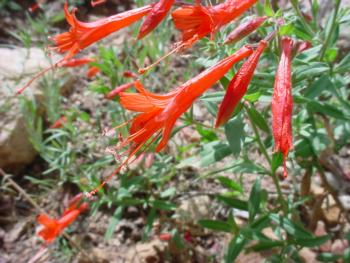 California Fuchsia (epilobium canum)
California Fuchsia (epilobium canum) - Trying to train desert willow to be tree, but challenging
- Cultivars: many examples including:
- several different epilobium cultivars,
- solidago cultivars,
- desert willow not a cultivar(see desert willow cultivar in succulent garden and compare to native here-pluses and minuses of each).
- Regular vs dwarf baccharis (both in garden) (again, pluses and minuses)
- Pluses/minuses of cultivars
- Seed collection: plants allowed to set seed (aster,gumplant,solidago,clarkia,foothillpenstemon, poppies, etc.)
- Good for critters (food) (especially birds)
- Effortless new plants-
- Plants survive where they will thrive best
- Small piles of rocks, sticks, placed as habitat for critters (lizards, frogs, etc.)
- Boulders: buried half way to improve natural look
- Branches placed for natural look,andtoinnoculatesoil with fungi (especially in oak woodland area,formycorrhizae)
- Hand watering whole area around plant may also help mycorrhizae (versus drip irrigation)
- Wildflower planting- we will continue to experiment with various approaches-
- Seed balls, branch coverings and row cover for bird protection, haveall been successful.
- How to deal with summer dormancy of some natives
- Shake leaves off to expose pretty bare branches (e.g. buckeye)
- Plant near plants with good summer/fall foliage (e.g. sticky monkey flower planted with summer-green plants)
- Be tolerant- like we are with winter dormancy- this is California!
- Vines can also work as groundcovers (clematis, honeysuckle in garden)
- Importance of Fall or winter planting
- Best time to plant! Cooler; winter rains will ease establishment
- A few plants are moderate water users. They can make sense especially near a house, as being more fire proof (e. g. clematis, grasses,juncus,sidalcea)
- Can also be used in rain garden, if can handle summer dry
Good resources: Calscape.org, Calflora.org, Native plant garden books (some in Placerville library)




